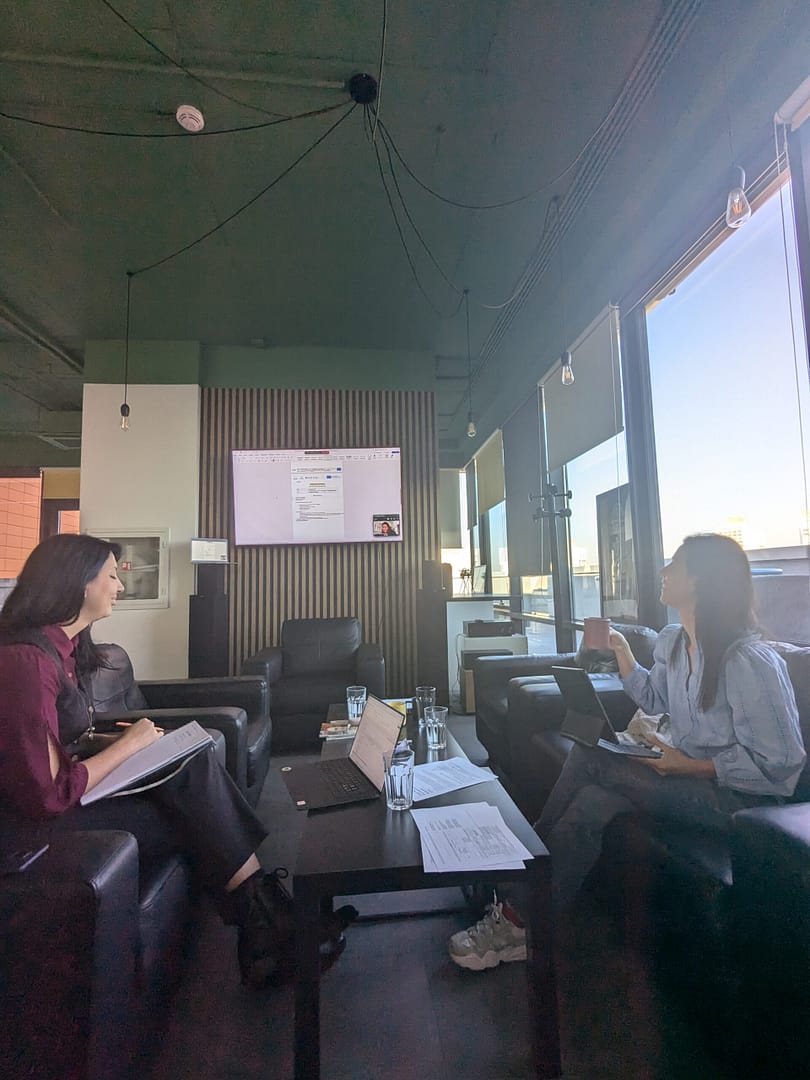Learning Outcomes:
Participants will first explore the critical role of plastic craftwork techniques and their benefits. They will then acquire the necessary skills and tools to effectively apply these concepts;
Duration:
2 hours
Materials needed:
Laptop/mobile device
projector/external screen
pens
papers
online evaluation form
tools for crafting: craft knives, scissors, glue, tape, crayons, markers, paint
materials for crafting: plastic, cartoon, can, textiles, and other provided materials that can be used for upcycling
Preparation
The first step in preparing for the upcoming session is to develop a presentation that covers the concepts of “Recycling, upcycling, and downcycling“.
Following this, a presentation on “Plastic Craftwork”, exploring various techniques and the numerous benefits associated with it.
In addition to preparing the presentations, the room will be arranged to ensure a comfortable and conducive learning environment for all participants. This includes setting up seating, testing any necessary equipment, and creating an atmosphere that promotes engagement and interaction.
Finally, an online evaluation form will be created for participants to complete after the session. This form will be designed to gather feedback on the activity, assessing its effectiveness and identifying areas for improvement in future sessions.
Description
In this session of the module, the trainer will build directly upon the previous activity, ensuring a seamless transition into the new material by connecting the group’s earlier discussions with the content to be covered.
To begin, the trainer will present the Learning Objectives (LOs) and the agenda for the session, setting clear expectations and outlining the key topics that will be explored.
The session will then proceed with a brief, 5-minute(recommended time) presentation on “Recycle, upcycle, and downcycle “, covering the definitions, importance, and examples of each concept.
A subsequent 10-minute presentation will focus on “Plastic craftwork techniques and their benefits“, reinforcing participants’ understanding of these key topics and their everyday applications.
This session is thoughtfully designed to enhance participants’ understanding of recycling, upcycling, downcycling, and plastic craftwork techniques, along with their benefits in daily life.
Practical Exercise:
Moving into the practical component, participants are divided into groups of four. They will engage in a hands-on activity, utilizing various materials such as plastic, cardboard, and textiles to create new items, which they will present to the group.
During the exercise, the trainer will:
- Provide the structure of the presentation exercise, displaying it on a projector for continuous reference.
- Offer support by answering participants’ questions and clarifying any misunderstandings.
- Observe group dynamics to ensure all participants are actively contributing to the work and presentations.
After the 1 hour and 30 minutes, the groups will reconvene in a plenary session to present their initiatives.
Each group’s presentation will last between 5 to 10 minutes, depending on the number of groups. Following each presentation, the audience will provide feedback and offer tips to the presenting group, fostering a collaborative and constructive environment.
The session will conclude with a 15-20 minute debriefing, see below the details.
Debriefing
After the practical exercise, the session transitions into a learning check and debriefing phase.
Presentation and Debriefing
As part of the learning check, participants will present the outcomes of their practical exercise. During this time, the trainer will guide the discussion by asking questions (see below) in order to summarize the key takeaways from both the theoretical presentations and the hands-on activity.
Debriefing Questions:
To facilitate reflection, the trainer will pose the following questions to the group:
- Can you explain the significance of plastic craftwork techniques in everyday life?
- What challenges did you encounter during the group exercise?
- How did your group decide on the materials and techniques used in your project?
- How effectively did your group collaborate? What could have been improved?
- What valuable feedback did you receive from the audience after your presentation?
Q&A and Group Discussion
The session will then move into a Q&A and group discussion, providing an opportunity for participants to engage in a deeper conversation about the exercise and the activity as a whole. This discussion allows for the exchange of ideas, clarification of any uncertainties, and further exploration of the topics covered.To facilitate reflection, the trainer will pose the following questions to the group:
- How has this session changed your perspective on recycling and creative reuse?
- What will you take away from today’s activity for future projects?
- Who else had the same experience? What surprised you?
- What do you know now that you didn’t know before?
- What adjective would you use to define this experience?
- Describe what you experienced during this experience.
Evaluation and Feedback Collection
Participants will be asked to complete an online evaluation form, providing valuable feedback on the session. This feedback will help the trainer assess the effectiveness of the activity and identify areas for improvement
Tips
The trainer must possess a deep and thorough understanding of the topic at hand. This expertise forms the foundation upon which the training is built, ensuring that the content delivered is both accurate and insightful.
The trainer should begin promptly, introducing themselves to the participants with a warm and welcoming demeanour. This initial introduction sets the tone for the session and establishes a rapport with the attendees.
Following this, the trainer must clearly outline the objectives and agenda of the session, providing a roadmap for what participants can expect to learn and accomplish.
Engagement is crucial throughout the session. The trainer should actively involve participants through thoughtful questions and interactive discussions. This approach helps maintain interest and encourages deeper understanding by prompting participants to reflect on and discuss the material being presented.
Ensuring that all participants are actively engaged and grasp each element of the training process is a fundamental responsibility of the trainer. It is not enough for the trainer to present the material; they must also verify that participants are following along and understanding the content.
Finally, the trainer will gather feedback to assess the effectiveness of the training session. This feedback is collected through online evaluation forms and a debriefing process. Analysing this feedback allows the trainer to refine their approach and improve future sessions, ensuring continuous enhancement of the training experience.
Handouts and resources
Plastic Crafting example of presentation
Tinkering presentation
Craftwork
Diy plastic crafting techniques
Video “35 USEFUL DIY CRAFTS WITH PLASTIC ITEMS”
Video on Upcycling, recycling and downcycling
Video – the difference between upcycle, recycle, and downcycle in fashion
Video-15 most amazing way to reuse plastic bottle
The trainer(s) can use these handouts for the session or create their own, as long as the same basic concepts are included (recycle, upcycle, downcycle, plastic craftwork techniques, plastic craftwork examples).
More To Explore
Co-Design Processes and Methodologies
Learning Objectives (LOs)
Mentoring methodologies and strategies
Learning Objectives (LOs)


